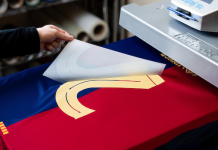According to Ariel Toledano, writing for Massivit 3D, it’s easy to forget how quickly things move, and sometimes it’s also easy to forget just how impactful additive manufacturing (AM) is to our world. AM, also known as 3D printing, is no longer a new technology, technically it has been around since the 1980s.
Yet, it is now that this technology and the industry around it is reaching a tipping point. As research firm IDTechEx put it, ‘After years of hype, the industry has moved onto more critical examination of the value-add that effective AM adoption brings to businesses and supply chains.’ In 2023, everyone is expecting AM to flourish, and with good reason(s).
AM to thrill manufacturers this year
3D printing is an important technology, enabling manufacturers to create more intelligent and flexible production systems that can respond to changing market conditions and customer needs. This year we’re expecting to see another big jump in the market for 3D printing. There are five primary reasons why this technology will shine in 2023: customisation, complex geometry, reduced lead times, cost-effective production, and sustainable production.
Customisation
3D printing allows manufacturers to produce customised parts that can be tailored to specific requirements or applications. For example, manufacturers may be able to produce components with unique geometries or surface finishes that would be difficult or impossible to achieve with traditional manufacturing methods. Additionally, 3D printing allows manufacturers to produce components in small batches or on demand, which can be particularly useful for industries that need to produce customised or specialised parts in small quantities. A perfect example here is the recreational vehicle (RV) industry, where personalisation is a must. Customisation demands for these vehicles are continuing to skyrocket, making 3D printing a great fit for RV producers.
Complex geometry
3D printing enables the production of complex geometries that may not be possible with traditional manufacturing methods. This is particularly useful for producing intricate components, as it allows manufacturers to create parts with sophisticated designs or features that would be difficult or impossible to achieve with traditional manufacturing methods. For example, 3D printing can enable the production of components with internal channels or cavities, or with intricate surface finishes. Furthermore, 3D printing allows manufacturers to produce components with overhangs or other features that would require support in traditional manufacturing processes.
Reduced lead times
Fast production times allow manufacturers to produce components within hours or days instead of weeks. This can be particularly useful for industries that require rapid turnaround times, such as aerospace and automotive, where manufacturers may need to produce components quickly to meet tight production schedules. As we mentioned in customisation, small batches of parts printed on demand can be useful in reducing the overall time it takes to acquire and manufacture larger products. By enabling fast production times and on-demand production, 3D printing can help manufacturers to reduce lead times and increase efficiency, which can help to improve overall competitiveness.
Cost-effective production
Traditional manufacturing methods may not be as efficient for producing small batches of parts, as they may require high upfront costs for tooling and setup, and may not be able to take full advantage of economies of scale. In contrast, 3D printing allows manufacturers to produce small batches of components on demand, which can help to reduce production costs. Whether printing plugs, tooling or jigs to set up short-run lines, or printing rapid prototypes or end-use parts, additive manufacturing changes this key aspect of production. Iterating and improving on new or experimental designs before beginning mass production is also significantly cheaper when using 3D printing instead of custom tooling for every stage of ideation.
Sustainable production
The use of sustainable materials, such as recycled plastics and biodegradable polymers, can help to reduce the environmental impact of production. This is particularly useful for industries that are looking to adopt more sustainable manufacturing practices, as it allows manufacturers to produce components with a smaller environmental footprint. Additionally, 3D printing can help to reduce material waste, as it allows manufacturers to produce components on-demand and in small batches, helping to reduce the overall environmental impact of production, as it can help to reduce the quantity of materials that are produced and discarded.
3D printing is driving us forward with flexibility
By now you know that 3D printing allows manufacturers to produce customised and complex parts on demand, using digital design and production processes. This can also help manufacturers to improve efficiency, reduce waste, and increase flexibility, as they can produce parts on-demand and in small batches rather than having to produce large quantities of components that may not be used.
Additionally, 3D printing enables the use of sustainable materials and can help to reduce the environmental impact of production. What we see as the overarching theme here is flexibility. These capabilities make 3D printing an important technology for 2023, because they enable manufacturers to create intelligent and flexible production systems that can respond to changing market conditions and customer needs.
As we barrel forward into a new era of technology, we must be aware of how quickly things can change. The flexibility that is inherent in additive manufacturing is a boon for this movement. It’s a big reason why 3D printing isn’t just crucial to creating this revolution in manufacturing, it’s also key to maintaining it. We’re all in for a brand new world ahead of us, printed layer by layer.
MASSIVIT 3D
https://massivit3d.com/















